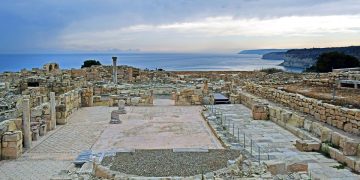Uncovering the Layers of Architectural History: From Ancient Wonders to Modern Marvels
Architecture is a reflection of human creativity, ingenuity, and cultural evolution. From the ancient wonders of the world to the modern marvels of today, architecture has played a crucial role in shaping our built environment. By uncovering the layers of architectural history, we can gain a deeper understanding of the societies that created these structures and the technologies that enabled their construction. In this article, we will explore the rich tapestry of architectural history, from the pyramids of Egypt to the skyscrapers of New York City.
Ancient Architecture: The Pyramids of Egypt
One of the most iconic examples of ancient architecture is the pyramids of Egypt. Built over 4,500 years ago, these massive structures were tombs for the pharaohs of Egypt. The Great Pyramid of Giza, built for Pharaoh Khufu, is the largest and most famous of these structures. It is estimated that it took over 20 years to build the Great Pyramid, using millions of limestone blocks weighing up to 80 tons each.
The construction of the pyramids required advanced engineering techniques, such as the use of ramps, levers, and pulleys to move and lift the massive stones. The precision with which the stones were cut and placed is a testament to the skill and craftsmanship of the ancient Egyptians.
Key Features of Ancient Egyptian Architecture
- Use of massive stone blocks
- Precision in stone cutting and placement
- Innovative engineering techniques
- Symbolism and religious significance
Greek and Roman Architecture: The Acropolis and Colosseum
The ancient Greeks and Romans were known for their contributions to architecture, with iconic structures such as the Acropolis in Athens and the Colosseum in Rome. The Acropolis is a hilltop citadel that houses several temples, the most famous of which is the Parthenon. Built in the 5th century BC, the Parthenon is considered a masterpiece of classical architecture, with its Doric columns and intricate friezes.
The Colosseum, built in the 1st century AD, is a massive amphitheater that could seat up to 80,000 spectators. It was used for gladiatorial contests, animal hunts, and other public spectacles. The Colosseum is a testament to the engineering prowess of the ancient Romans, with its innovative use of arches and vaults.
Key Features of Greek and Roman Architecture
- Use of columns and friezes
- Innovative use of arches and vaults
- Integration of sculpture and decoration
- Functional and aesthetic considerations
Gothic Architecture: Notre Dame Cathedral
In the Middle Ages, Gothic architecture emerged in Europe, characterized by its pointed arches, ribbed vaults, and flying buttresses. One of the most famous examples of Gothic architecture is Notre Dame Cathedral in Paris. Built in the 12th century, Notre Dame is known for its towering spires, intricate stained glass windows, and sculpted façade.
Gothic cathedrals were designed to inspire awe and reverence, with their soaring heights and intricate details. The use of stained glass allowed for the infusion of light and color into the interior spaces, creating a sense of transcendence and spirituality.
Key Features of Gothic Architecture
- Pointed arches and ribbed vaults
- Flying buttresses for structural support
- Stained glass windows for light and color
- Emphasis on verticality and height
Renaissance and Baroque Architecture: St. Peter’s Basilica
The Renaissance and Baroque periods in Europe saw a revival of classical forms and an emphasis on grandeur and ornamentation. St. Peter’s Basilica in Vatican City is a prime example of this architectural style, with its massive dome, towering façade, and elaborate interior decorations.
Designed by renowned architects such as Michelangelo and Bernini, St. Peter’s Basilica is a masterpiece of Renaissance and Baroque architecture. The dome, in particular, is a marvel of engineering, with its double-shelled construction and oculus at the top.
Key Features of Renaissance and Baroque Architecture
- Revival of classical forms and proportions
- Emphasis on grandeur and ornamentation
- Innovative engineering solutions
- Integration of sculpture and decorative arts
Modern Architecture: The Guggenheim Museum
In the 20th and 21st centuries, modern architecture has embraced new materials, technologies, and design principles. The Guggenheim Museum in New York City, designed by Frank Lloyd Wright, is a prime example of modern architecture. Completed in 1959, the Guggenheim is known for its spiraling ramp and organic form, which revolutionized museum design.
Modern architects have pushed the boundaries of what is possible in terms of form, structure, and function. Buildings like the Burj Khalifa in Dubai, the Shard in London, and the Sydney Opera House in Australia showcase the innovative spirit of modern architecture.
Key Features of Modern Architecture
- Exploration of new materials and technologies
- Emphasis on sustainability and energy efficiency
- Innovative forms and structures
- Integration of art and technology
Conclusion
Architecture is a living testament to the creativity, ingenuity, and cultural evolution of humanity. By uncovering the layers of architectural history, we can gain a deeper appreciation for the societies that created these structures and the technologies that enabled their construction. From the ancient wonders of Egypt to the modern marvels of today, architecture continues to inspire and awe us with its beauty and complexity.
As we continue to push the boundaries of what is possible in architecture, we must also remember the lessons of the past and strive to create buildings that are not only functional and sustainable but also beautiful and inspiring. By learning from the architectural wonders of the past, we can create a built environment that enriches our lives and connects us to our shared human history.
References
1. “The Pyramids of Egypt: Architecture and Construction” by Mark Lehner
2. “The Colosseum: Building the Arena of Death” by Keith Hopkins
3. “Gothic Architecture: The Age of Cathedrals” by Robert Branner
4. “Renaissance and Baroque Architecture: From St. Peter’s to Versailles” by Rolf Toman
5. “Modern Architecture: A Critical History” by Kenneth Frampton












